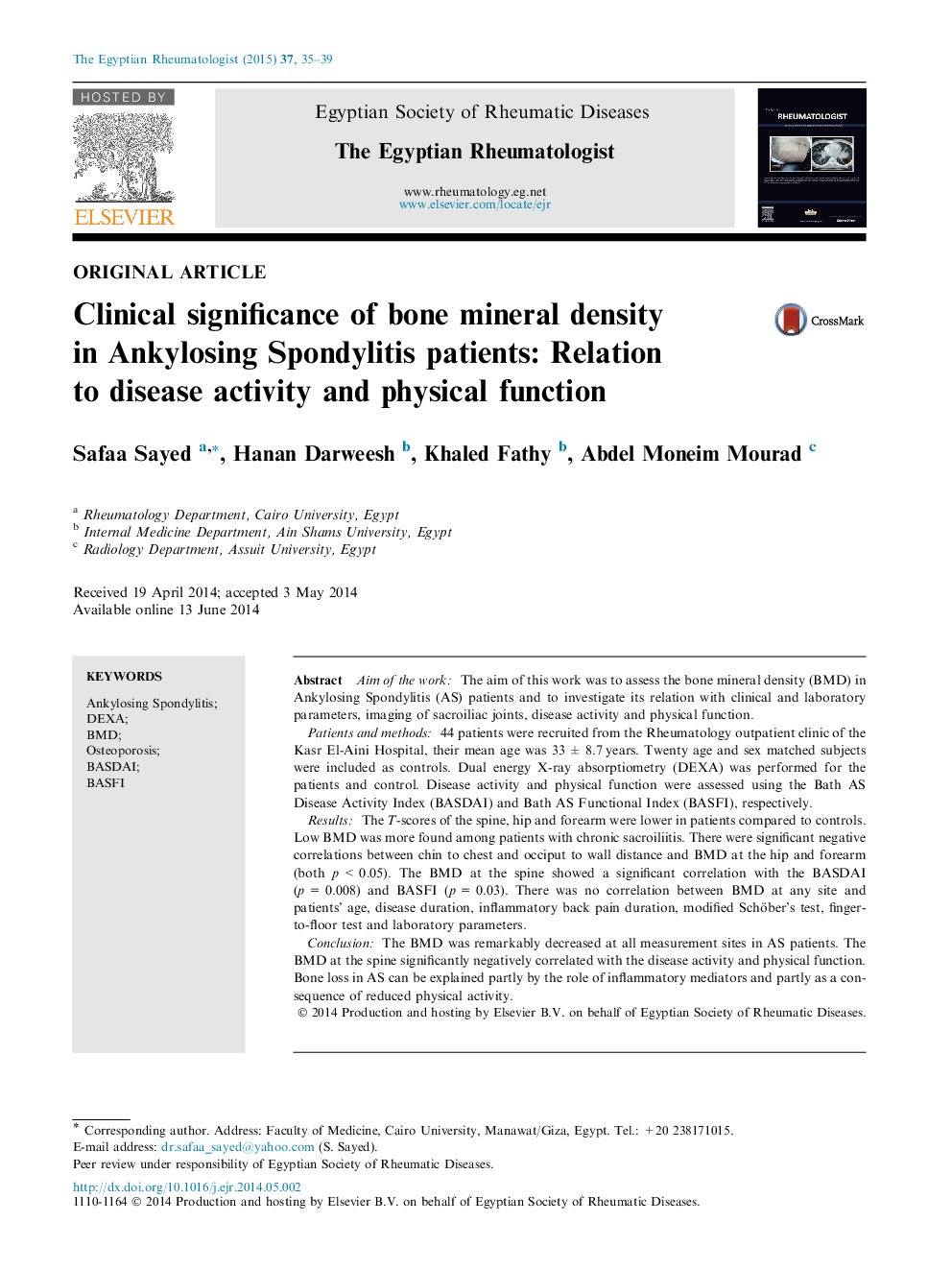| Article ID | Journal | Published Year | Pages | File Type |
|---|---|---|---|---|
| 3348955 | The Egyptian Rheumatologist | 2015 | 5 Pages |
Aim of the workThe aim of this work was to assess the bone mineral density (BMD) in Ankylosing Spondylitis (AS) patients and to investigate its relation with clinical and laboratory parameters, imaging of sacroiliac joints, disease activity and physical function.Patients and methods44 patients were recruited from the Rheumatology outpatient clinic of the Kasr El-Aini Hospital, their mean age was 33 ± 8.7 years. Twenty age and sex matched subjects were included as controls. Dual energy X-ray absorptiometry (DEXA) was performed for the patients and control. Disease activity and physical function were assessed using the Bath AS Disease Activity Index (BASDAI) and Bath AS Functional Index (BASFI), respectively.ResultsThe T-scores of the spine, hip and forearm were lower in patients compared to controls. Low BMD was more found among patients with chronic sacroiliitis. There were significant negative correlations between chin to chest and occiput to wall distance and BMD at the hip and forearm (both p < 0.05). The BMD at the spine showed a significant correlation with the BASDAI (p = 0.008) and BASFI (p = 0.03). There was no correlation between BMD at any site and patients’ age, disease duration, inflammatory back pain duration, modified Schöber’s test, finger-to-floor test and laboratory parameters.ConclusionThe BMD was remarkably decreased at all measurement sites in AS patients. The BMD at the spine significantly negatively correlated with the disease activity and physical function. Bone loss in AS can be explained partly by the role of inflammatory mediators and partly as a consequence of reduced physical activity.
